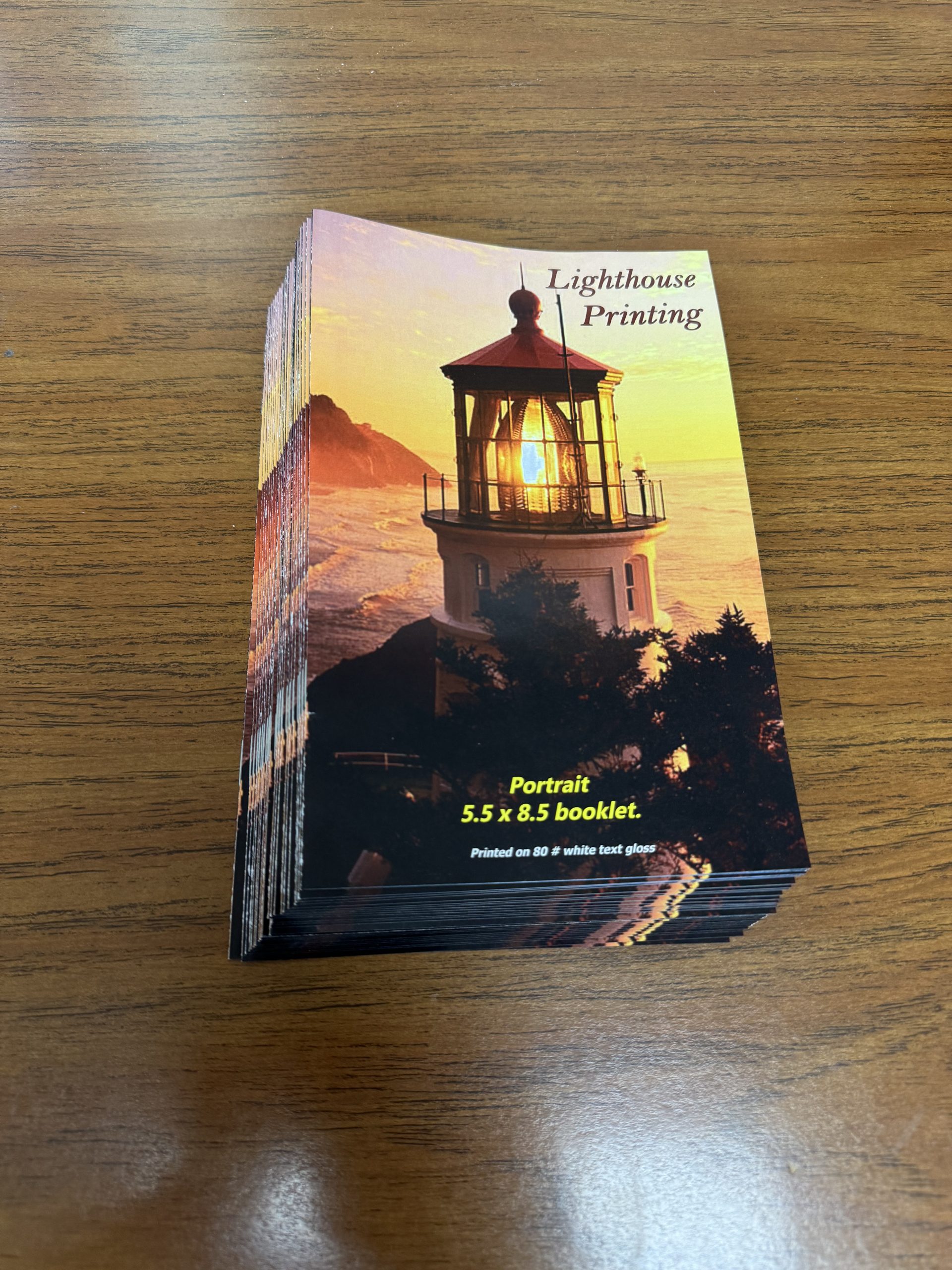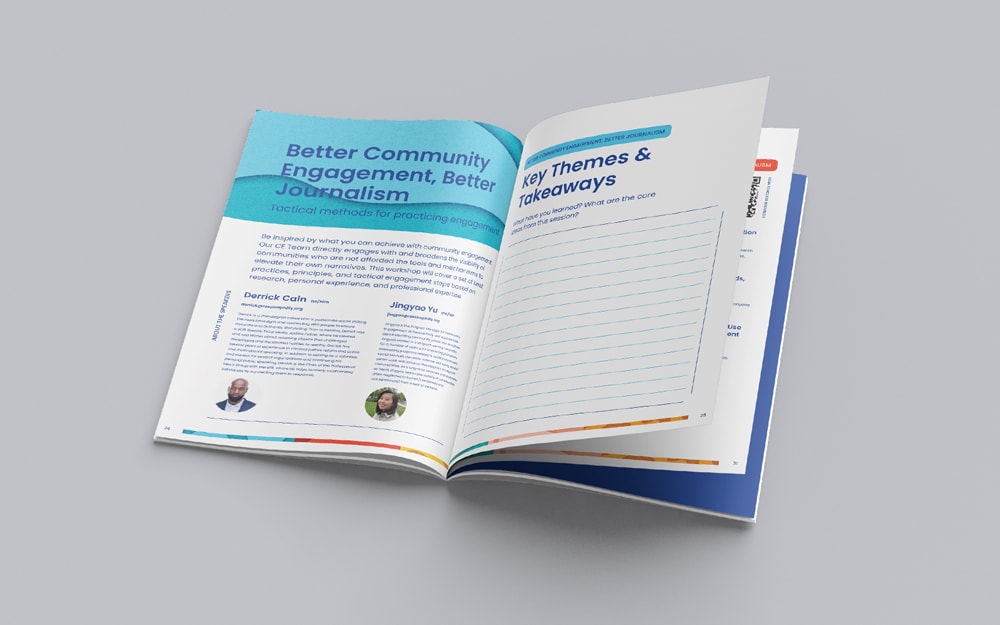The Necessary Overview to Comprehending Booklet Printing Options and Techniques
The process of pamphlet printing includes several considerations that can greatly influence the end product. From picking the ideal style and size to recognizing the subtleties of binding methods, each selection plays a crucial function. Additionally, factors such as paper supply and printing techniques more influence the effectiveness of the pamphlet. As one navigates these alternatives, it ends up being vital to grasp just how they interconnect and what that suggests for the general outcome.
Comprehending Booklet Dimensions and formats
When thinking about booklet printing, comprehending the various styles and dimensions offered is essential for accomplishing the desired presentation. Pamphlets can be created in countless formats, consisting of saddle-stitched, spiral-bound, and perfect-bound, each offering distinctive advantages. Usual dimensions range from typical letter (8.5 x 11 inches) to smaller choices like A5 (5.8 x 8.3 inches), permitting for versatility based upon web content and target audience.Selecting the appropriate dimension can affect both the layout and viewers engagement. Larger sizes might fit aesthetically driven web content, while smaller sized formats might be extra portable and user-friendly. Additionally, the number of pages influences the selection of binding method, as thicker booklets may call for sturdier bindings. Ultimately, understanding these elements allows for a much more tailored technique, making sure that the last item straightens with the designated message and visual, improving the general efficiency of the communication.
Choosing the Right Paper Stock

Binding Methods: Factors To Consider and options
When it involves binding methods for brochures, numerous alternatives are available, each with unique benefits. Saddle stitch binding supplies an affordable option for thinner pamphlets, while excellent binding techniques provide a more refined try to find thicker magazines. Wire-O binding attracts attention for its durability and ease of use, making it optimal for records that call for adaptability.
Saddle Stitch Binding
Saddle stitch binding supplies a practical and cost-effective service for putting together brochures, making it a prominent choice among publishers and businesses. This binding approach entails folding sheets of paper in fifty percent and stapling them along the fold line, producing a neat and organized look. Normally appropriate for brochures with a lower web page matter, saddle stitching is optimal for magazines, brochures, and educational products. The simplicity of this strategy permits quick production and is often preferred for advertising products or short runs. Nonetheless, it is vital to keep in mind that saddle stitch binding may not appropriate for thicker pamphlets, as the spinal column might not stand up under enhanced weight. Overall, it continues to be a reputable option for several printing jobs.
Perfect Binding Techniques
Perfect binding is a commonly used method that provides a sleek and professional surface to brochures and publications. This approach involves gluing the web pages with each other at the spinal column making use of a strong adhesive, permitting a clean side and the capacity to hold a larger variety of pages compared to saddle sewing. Perfect binding is particularly appropriate for thicker pamphlets, such as directories and yearly reports, where a strong, level spine is preferred. In addition, it provides the choice for a published cover that can be developed to boost visual charm. Nonetheless, considerations such as page count, paper weight, and the planned use the booklet must be taken into consideration, as they can affect toughness and overall quality.
Wire-O Binding Alternatives
Wire-O binding, known for its resilience and versatility, uses a superb alternative for booklets that require easy page turning and a professional appearance. This binding method employs a series of steel loopholes that hold web pages firmly, permitting them to exist level when open. It is especially appropriate for discussions, handbooks, and directories as a result of its robust nature. Wire-O binding is readily available in numerous shades and diameters, accommodating different web page matters and thicknesses. Additionally, it allows the incorporation of covers and tabs, enhancing the pamphlet's total aesthetic. Considerations for Wire-O binding consist of the option of wire shade, the dimension of the loops, and the level of modification preferred, all of which can greatly influence the end product's look and capability.
Digital vs. Offset Printing: Which Is Best for You?
When picking a printing method for pamphlets, comprehending the differences in between digital and counter printing is necessary. Digital printing uses modern-day innovation to produce high-grade prints rapidly and affordably, making it suitable for short runs or tasks requiring fast turnaround times. It enables customization, giving the capability to publish on-demand with very little waste.In comparison, offset printing is a typical technique that masters creating huge quantities with constant quality. It includes moving ink from a plate to a rubber blanket, then to the paper, which causes dynamic shades and precise details. However, balance out printing commonly requires longer configuration times and is extra affordable for bigger volumes.Ultimately, the selection between digital and balance out printing relies on task requirements, budget plan, and wanted amount. For little, time-sensitive tasks, electronic could be the best option, while countered might be preferable for larger, premium manufacturings.

Designing Your Pamphlet: Tips and Ideal Practices
When making a pamphlet, cautious interest to layout, font option, and shade use can greatly enhance its performance. A well-structured design guides the reader's eye, while ideal font styles ensure readability and communicate the preferred tone. Additionally, reliable use color can stimulate feelings and highlight vital info, making the overall layout a lot more impactful.
Choosing the Right Format
Exactly how can one effectively choose the appropriate design for a booklet? Initially, it is necessary to evaluate the pamphlet's function and target market. A tidy, organized design enhances readability and interaction. Utilizing a grid system can assist in aligning components regularly, developing a professional look. Additionally, integrating visual pecking order via varying dimensions and placements of pictures and message can direct the visitor's eye and emphasize essential details. It is also crucial to leave sufficient white area, which protects against overcrowding and enables far better focus. Evaluating different designs via mock-ups can provide insight into exactly how the layout executes in real-world scenarios, guaranteeing that the final item satisfies both visual and useful requirements.
Selecting Suitable Font Styles
A well-chosen font style can considerably boost the total layout of a pamphlet, enhancing the format and enhancing the content's message. The choice of font styles ought to think about readability, particularly for body text, as it guarantees the details is accessible to all readers. Sans-serif get redirected here typefaces are often preferred for electronic layouts, while serif font styles can provide a conventional feel in printed products. It's suggested to restrict font options to two or 3 to keep visual coherence. Additionally, typeface dimension plays an essential role; headings should be not overwhelming yet unique, while body text need to fit for reading. When selecting typefaces, positioning with the booklet's motif and target market is vital for effective interaction and aesthetic appeal.
Reliable Use Shade
Color offers as an effective tool in booklet layout, shaping assumptions and directing reader feelings. It can evoke sensations of peace, excitement, or count on, relying on the hues chosen. Developers should think about shade concept concepts, guaranteeing that the selected scheme aligns with the booklet's message and target audience. Making use of cozy shades like red and orange can develop urgency, while cooler tones like blue and green foster tranquility.Additionally, contrast plays a crucial function; corresponding shades can improve readability and aesthetic charm. Uniformity in shade use across pages additionally enhances brand name identity and cohesion. Eventually, efficient color implementation not only captures attention yet additionally enhances the pamphlet's objective, making it a crucial facet of effective style.
Completing Touches: Coatings and Special Effects
While many consider the content and format of a pamphlet one go to this web-site of the most vital aspects, the finishing touches, such as coverings and special results, play a necessary function in enhancing its general appeal. Coatings can give protection and sturdiness, ensuring that the booklet endures damage. Matte finishes supply an helpful resources advanced, non-reflective surface, while glossy layers can make colors appear even more vibrant and captivating. Special impacts, like embossing or foil marking, include a tactile dimension that can produce a remarkable impression. These strategies can highlight certain locations, drawing interest to essential details or creating visual interest. Furthermore, UV layer can give a high-shine coating that boosts the total look.Together, these completing touches not just enhance the booklet's visual yet additionally connect professionalism and trust and focus to detail, ultimately leaving a long lasting effect on the reader.
Expense Considerations for Pamphlet Printing
Comprehending the numerous expense factors to consider for pamphlet printing is important for companies and companies intending to maximize their budgets. Trick variables affecting prices include the selection of binding, ink, and paper approaches. Higher high quality materials, such as superior paper or specialized inks, usually increase the total expense. Furthermore, the dimension and page matter of the brochure play a considerable duty; bigger brochures need even more sources and time to produce.Another important factor to consider is the printing technique, whether electronic or offset, as each has its very own pricing structure and viability for various amounts. Services should likewise factor in style expenses, which can differ based upon intricacy and the use of expert services. Ultimately, delivery and handling charges can add to the total, particularly for large orders. By examining these aspects, organizations can make informed decisions that straighten with their monetary capacities while accomplishing the preferred high quality in their printed products.
Often Asked Concerns
What Are the Environmental Influences of Pamphlet Printing?
The environmental impacts of brochure printing consist of logging from paper production, carbon discharges from transportation, and waste generation from disposed of products - Booklet Printing. Sustainable methods, such as utilizing recycled paper and eco-friendly inks, can alleviate these effects
Just How Can I Make Certain Color Precision in My Booklet?
To ensure shade accuracy in a pamphlet, one should use adjusted screens, employ professional shade profiles, conduct examination prints, and select high-quality printing services that provide shade matching and proofing alternatives for ideal outcomes.
What Is the Regular Turn-around Time for Booklet Printing?
The typical turn-around time for brochure printing differs depending on the intricacy and quantity - Booklet Printing. Usually, it ranges from a few days to 2 weeks, affected by elements such as printing methods and finishing requirements
Are There Minimum Order Quantities for Pamphlet Printing?

Can I Print Brochures in Several Languages?
Publishing brochures in multiple languages is possible. Several printing services use alternatives for multilingual or multilingual layouts, enabling for efficient communication. Cautious planning warranties that develop aspects fit different languages without compromising readability or aesthetic appeals. Furthermore, elements such as paper supply and printing techniques additional affect the effectiveness of the brochure. When considering booklet printing, understanding the numerous styles and sizes readily available is necessary for accomplishing the desired presentation. When selecting a printing method for brochures, recognizing the differences between electronic and balance out printing is necessary. In addition, the size and web page count of the brochure play a substantial duty; bigger pamphlets call for even more resources and time to produce.Another important factor to consider is the printing strategy, whether electronic or balanced out, as each has its very own pricing framework and suitability for different amounts. The environmental effects of brochure printing include logging from paper production, carbon exhausts from transportation, and waste generation from thrown out materials.